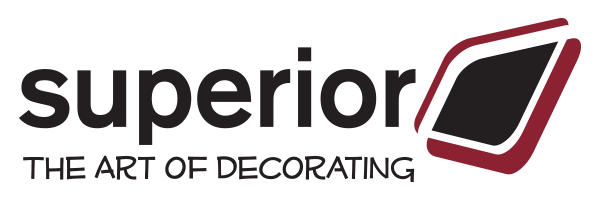Embroidery FAQ
What brand of thread does Superior use?
We use Salus, Isacord, Madeira and Robison-Anton Rayon Thread.
How long from the time I place my order until I see a proof?
The time frame is usually between 2 and 3 days. It can be provided sooner; however, please discuss this option with customer service when placing your order.
When will I see my sewout?
Sewout proofs will be provided, on average, within 2–3 days of submitting a design with a PO and after any questions relating to your PO have been addressed.
What would constitute a delay in obtaining my proof or sewout?
Whenever we are not provided with complete information to run your order there will be a delay. We need to know what color (or colors) your design should be sewn in, as well as the size of the design and placement on the garment.
How will I receive my proof?
Sewout proofs are typically provided as photographs of the sewn design in the thread that is to be used for the production run.
Can Superior embroider caps, totes and jackets?
YES! We can embroider just about any piece of apparel you or your customer desires. Contact customer service for more information.
Can you sew appliqué or patches?
Yes we can. Each appliqué is quoted as a special technique and can be supplied by Superior.
Will you digitize my design?
All embroidery designs must be digitized prior to production.
We are able to handle all your digitizing needs.
Can I provide my own digitized files? Which file format(s) do you accept?
You are welcome to provide your own digitized files.
We require provided digitized files to be in a .dst format.
We will review the provided file(s) prior to production for any potential problems and will advise you if any changes are necessary.
What are some possible concerns that I should be aware of when planning to have a design embroidered?
Text smaller than 1/4 inch tall.
If you want an embroidered logo to stitch well, you should never attempt to embroider text smaller than 1/4 inch. This will ensure that your logo can be stitched on anything from pique to fleece. Producing a logo with text that is too small will barely stitch on a nylon jacket and will be almost illegible when stitched on fleece or pique.
Thin lines and fine detail
Thin lines and details can be a problem due to the fact that you need to reproduce a thin solid line with a series of very thin stitches. If you attempt to reproduce these sections with a walk stitch you will get a “dotted line effect” as each stitch enters and exits the fabric.
Areas that contain color gradients
Color gradients are easily produced in a print process; however, embroidery uses distinct colors, which makes it a challenge to reproduce shadows and gradients.
Provided image size
When the provided art file is smaller than the actual garment decoration, it often results in soft or fuzzy lines and loss of detail. The art file MUST be re-sized so that our digitizing team is not forced to make guesses as to how they think your artwork should look. In order to avoid this problem, always provide art files larger than the final product.
Fabric type
Fabric does affect how an embroidered logo looks. Nylon fabrics are relatively easy to stitch on due to the uniform nature of the woven material. Pique is usually the most challenging, having a loose, non-uniform knit and texture.
